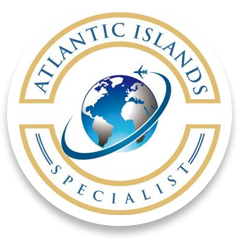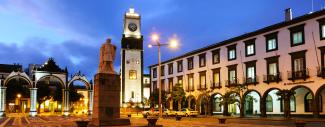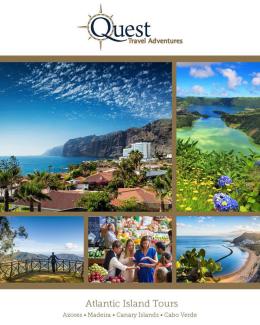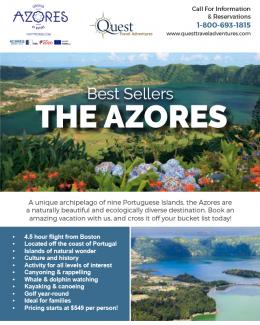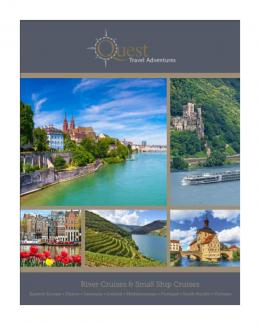The Colorful Islands of the Azores
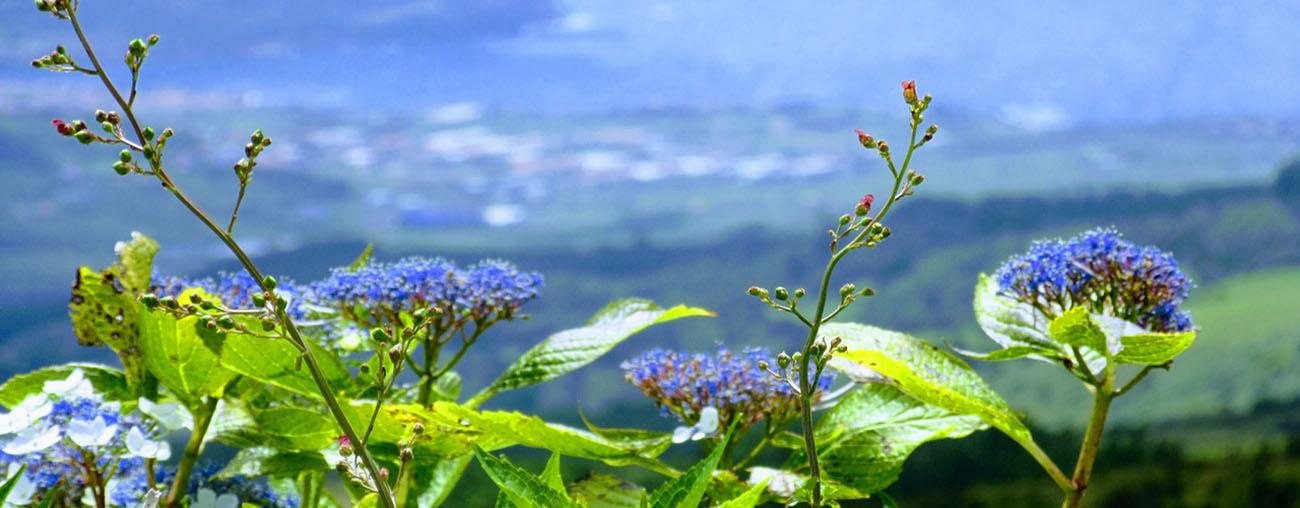
The Azores archipelago consists of nine volcanic islands. Each island is unique, with distinct landscapes, cultures, and traditions. Different colors are used to represent each island and the colors assigned are based on the island's landscapes, flora, and fauna.
São Miguel, the largest island in the Azores archipelago, is called the "Green Island." This nickname is due to the island's lush, verdant landscapes resulting from its subtropical climate and volcanic soil. The island is dominated by two massive stratovolcanoes, which have created a rugged, mountainous terrain. The island's volcanic soil is nutrient-rich, making it ideal for agriculture and plant growth. São Miguel is known for producing tea, pineapples, passion fruit and a large variety of vegetables in the island's fertile soil. The island's greenery is visible throughout, with forests, fields, and meadows covering much of the landscape. São Miguel is home to several stunning parks and gardens, including the Terra Nostra Park, which features a large botanical garden with over 2,000 species of plants, hot springs, and a natural swimming pool.
Terceira is known as the Lilac Island. Terceira is located in the central group of the Azores Islands and is characterized by its rolling hills, volcanic landscapes, and picturesque villages. One of the most striking features of Terceira is the hydrangeas that grow on the island. These beautiful flowers can be found in gardens, parks, and along the island's roadsides. The hydrangeas are particularly abundant in the summer when they bloom in shades of white, pink, and lilac. The hydrangeas have become an important symbol of Terceira's identity and culture. The flowers often decorate the island's houses, churches, and public spaces. The lilac color associated with Terceira's hydrangeas is why the island is known as the Lilac Island. The color has become a symbol of the island's religious heritage and natural beauty.
Faial is known as the Blue Island due to its stunning azure blue landscapes that are a result of its volcanic activity. Faial's central crater, the Caldeira, is an incredible sight with its bright blue lake in the middle. The color of the lake changes throughout the day, depending on the angle of the sun and the weather conditions. In addition to the Caldeira, Faial is also known for its abundance of blue hydrangeas, which can be found throughout the island growing on the sides of the roads as fences for the cows and other farm-life. These flowers bloom in various shades of blue due to the acidity in the soil.
Pico is known as the Mountain Island and is associated with the color dark gray due to its young volcanic landscape. The island is dominated by its volcanic peak, Mount Pico, the highest point in Portugal, standing at 2,351 meters. The island is also known for its UNESCO-listed vineyards, which grow in the dark volcanic soil. The island's vineyards, located in the ash-rich soil, produce a unique variety of wine that connoisseurs highly prize, with a uniquely sharp and mineral taste. The island's volcanic rock has been used for centuries to build houses, roads, and other infrastructure.
Santa Maria, also known as the ‘Sun island,’ is associated with the color yellow because of the abundant sunshine. It is the Southernmost island in the Azores archipelago and boasts the sunniest and driest climate of all the Azores islands. The pleasant weather makes Santa Maria a perfect destination for outdoor enthusiasts and a summer destination for Portuguese searching for a warm beach.
São Jorge has a rugged, jagged coastline dotted by fajãs that extend into the sea. The fajãs are flat plains at the bottom of the cliffs, initially created by lava or landslides, where remote villages were established, and there are over 40 in São Jorge. The fajãs are highly fertile and are used to grow fruit, vegetables, wheat, coffee, and other crops. The island is associated with the color Brown to represent the rich fertile soil of the fajãs.
Flores is known for its stunning natural beauty, featuring rugged cliffs, deep valleys, numerous waterfalls, and picturesque lakes. It is known as the Island of Flowers and is associated with the color pink due to its lush vegetation and colorful wildflowers, especially Azaleas & Hydrangeas. Flores experiences the most dramatic weather in all the Azores, being the furthest western Island, thus is a better destination to visit in the summer months.
Corvo means crow in Portuguese, and Corvo island is nicknamed the Black Island, not only for the color of their namesake birds but also for the dark black caves that exist on the island and the black basalt stone that is found in abundance and used to build walls, houses and even roads. It is also the most isolated island in the archipelago and has a population of only 500 residents.
Graciosa has the nickname of the White Island. It is known for its landscape of whitewashed houses and volcanic rock, which is common on the island. The rock turns a whitish color over time, and many areas of the island are named for the white rocks; Pedra Brancas (White Stones) and Serra Branca (White Hills) are just 2 of these areas.
The tradition of assigning a color to an island has become an important part of the Azores' cultural identity. The colors are a source of pride for the islanders, and they are often used in festivals and parades and to promote the islands to visitors from around the world. Explore the colors of the Azores for yourself. Some of our most popular Azores packages include Best of the Azores, Azores Sun Island Combo, Two Island Azores Golf Getaway, Three Island Azores Adventure Seeker, and Four Island Azores Tour.
Interested in how you can travel between the Azores Islands? View our popular blog post How to Travel Between the Azores Islands.



